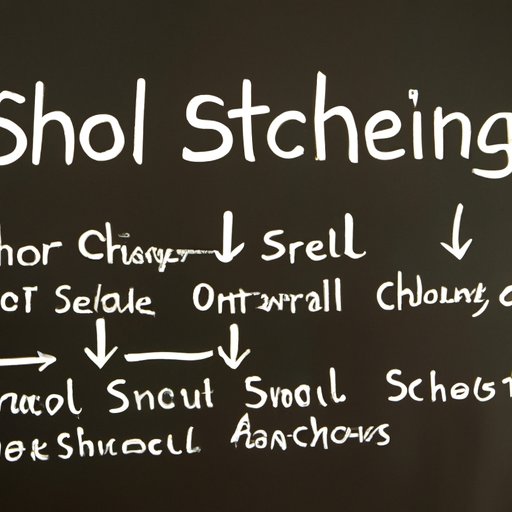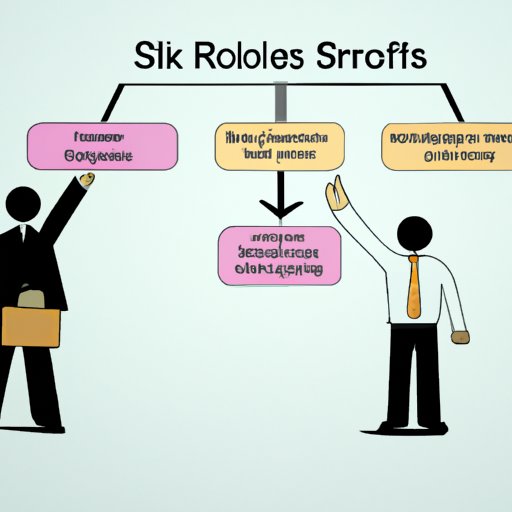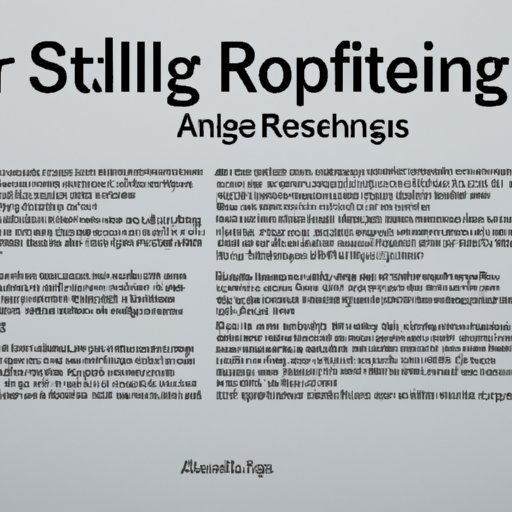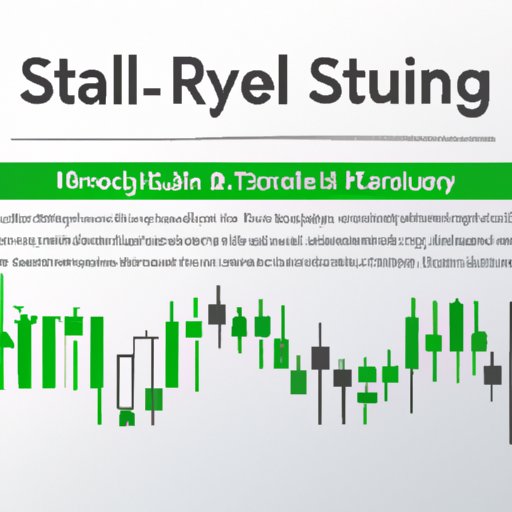An Overview of Short Selling
Short selling is a stock trading strategy that allows investors to benefit from falling stock prices. It involves borrowing shares of a stock from a broker and then selling them in the open market. If the price of the stock drops, the investor can buy back the borrowed shares at a lower price, pocketing the difference as profit.
Definition of short selling
In short selling, investors borrow shares of a stock from a broker and sell them in the open market. The goal of the investor is to buy back the borrowed shares at a lower price than the price they sold them for. The difference between the sale and purchase prices is the investor’s profit.
How short selling works
The mechanics of short selling are relatively straightforward. First, the investor borrows the desired number of shares from their broker. Then, they place a sell order in the open market. When the order is filled, the investor receives the proceeds from the sale. Finally, when the investor is ready to close out their position, they buy back the borrowed shares in the open market, returning them to their broker. The investor keeps the difference between the sale and purchase prices as their profit.
The distinction between shorting and buying on margin
It’s important to note that short selling is distinct from buying on margin. Buying on margin involves borrowing money from a broker to purchase a stock, while short selling involves borrowing shares from a broker. Both techniques allow investors to leverage the power of borrowed capital, but the risks associated with each strategy are different.

The Mechanics of Short Selling
Short selling is a relatively simple process. Here are the steps involved:
Borrowing shares from broker
First, the investor must borrow the desired number of shares from their broker. Most brokers will require the investor to put up collateral such as cash or securities in order to secure the loan. The amount of collateral required will depend on the broker and the stock being traded.
Placing a sell order
Once the investor has borrowed the desired number of shares, they can place a sell order in the open market. Depending on the broker, the investor may be able to place a limit order, which specifies the minimum price they are willing to accept for the sale.
Closing out the position
When the investor is ready to close out their position, they buy back the borrowed shares in the open market. The investor pays the current market price for the shares, plus any interest accrued on the loan. The difference between the sale and purchase prices is the investor’s profit.

Benefits and Risks of Short Selling
Short selling offers several potential benefits, but it also carries significant risks. Here’s a look at the advantages and disadvantages of this investment strategy.
Advantages of short selling
Short selling allows investors to benefit from falling stock prices. It also gives investors the ability to hedge their portfolios against market declines, reducing their overall risk exposure. According to a study by the National Bureau of Economic Research, “The evidence suggests that short sellers are more likely to be correct than wrong about future stock returns.”
Disadvantages of short selling
The biggest risk associated with short selling is that the stock price could rise instead of fall. In this case, the investor would have to buy back the borrowed shares at a higher price, resulting in a loss. Short selling also carries the risk of increased volatility, as well as the potential for unlimited losses.
Risk management strategies
Investors should use risk management strategies to minimize their potential losses from short selling. For example, investors should set stop-loss orders to automatically close out their positions if the stock price reaches a certain level. They should also use other hedging techniques, such as options and futures, to protect their downside risk.
How to Execute a Short Sell Trade
Executing a successful short sell trade requires careful planning and research. Here are the steps involved:
Selecting a stock
The first step is to select a stock that you believe is likely to decline in price. This requires careful analysis of the stock’s fundamentals, including its financial statements, competitive position, and industry trends.
Determining an appropriate entry point
Once you’ve identified a suitable stock, you need to determine an appropriate entry point. This involves analyzing the stock’s historical price movements and technical indicators to identify a level at which you believe the stock is likely to start declining.
Executing the trade
Once you’ve identified an entry point, you can execute the trade. This involves placing a sell order for the desired number of shares and then waiting for the order to be filled. Once the order is filled, you can monitor the stock’s price movements and wait for the right time to close out your position.

Popular Strategies for Short Selling
There are a variety of strategies that investors can use to maximize their profits from short selling. Here are some of the most popular:
Momentum trading
This strategy involves identifying stocks that have recently experienced a sharp decline and then shorting them in the hopes that the trend will continue. Momentum traders often use technical analysis to identify potential opportunities.
Swing trading
Swing trading involves taking advantage of short-term price fluctuations in a stock. Swing traders typically hold their positions for a few days or weeks and then close out their positions when the stock reaches a predetermined target price.
Arbitrage
Arbitrage is a strategy that involves taking advantage of price discrepancies between two related markets. For example, an investor might simultaneously buy a stock in one market and short sell it in another, profiting from the difference in the prices.

Regulatory Considerations for Short Selling
Short selling is subject to a variety of regulations designed to protect investors and maintain market integrity. Here are some of the most important rules and regulations:
SEC regulations
The Securities and Exchange Commission (SEC) regulates short selling activities in the United States. Among other things, the SEC requires investors to file reports when they engage in short selling and imposes restrictions on when and how investors can short sell.
Uptick rule
The uptick rule is an SEC regulation that prohibits investors from short selling a stock unless the last trade was at a higher price than the previous trade. This rule is designed to prevent investors from driving down the price of a stock through aggressive short selling.
Pattern day trader rule
The pattern day trader rule is an SEC regulation that restricts the number of trades an investor can make in a single day. The rule is intended to protect investors from excessive risk taking and to prevent market manipulation.
(Note: Is this article not meeting your expectations? Do you have knowledge or insights to share? Unlock new opportunities and expand your reach by joining our authors team. Click Registration to join us and share your expertise with our readers.)
